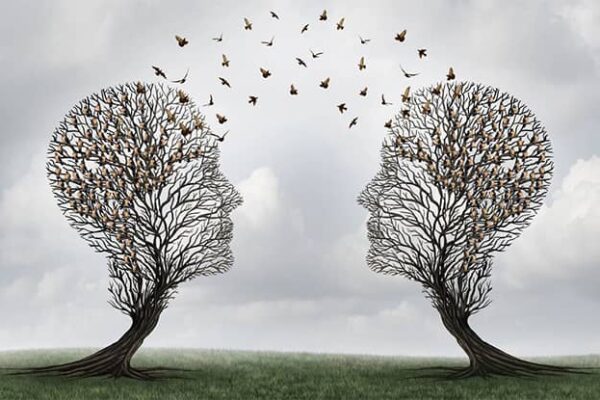Music Therapy is a specialized area of psychotherapy that uses music to improve a person’s physical, emotional, cognitive, and social well-being. In the modern world, music therapy is recognized as an important and effective treatment method that has a comprehensive impact on individuals.
Music therapy adapts to the individual needs of each client, helping a wide range of people—from children to the elderly, including individuals with special needs. It encompasses a variety of methods such as creating music, listening to musical compositions, analysis, and movement to music, allowing it to be used in various settings, including schools, hospitals, rehabilitation centers, and nursing homes.
Music therapy demonstrates significant success in treating and correcting many conditions, including mental disorders, neurological problems, development and learning, as well as relieving pain and stress. It also helps individuals express their emotions and feelings, improves communication and social skills, making it a valuable tool in a holistic approach to health and well-being.
The history of music therapy dates back to ancient times when music was used in rituals and ceremonies for healing and restoring mental balance. In various cultures around the world, music has always been considered a powerful tool that affects a person both physically and emotionally. This is reflected in the traditions and writings of ancient civilizations such as Egypt, Greece, India, and China.
During the Renaissance, systematic studies of music’s influence on human health began. In the following centuries, particularly in the 19th and 20th centuries, music therapy took a more organized form. With the development of psychology and medicine, interest in studying music as a therapeutic tool increased.
In the 20th century, especially after World War II, music therapy became an acknowledged part of psychological rehabilitation for military personnel, contributing to its spread and development. In the following decades, it evolved as an academic discipline with the establishment of specialized training programs, research centers, and professional associations around the world. This led to a deeper understanding of the mechanisms of music’s impact and the expansion of its application areas for therapeutic purposes.

Foundations of Music Therapy
Music therapy, a diverse and deeply personalized form of psychotherapy, uniquely combines art and science. This therapeutic practice, rooted in ancient times, today stands at the intersection of many disciplines, including medicine, psychology, and musical art. It is based on the belief that music can have a profound and multifaceted impact on a person, leading to significant changes in emotional, cognitive, and even physical conditions.
Interest in music therapy has grown in recent decades as research increasingly confirms its effectiveness in various situations. From its use in rehabilitation programs for war veterans to supporting people with neurological disorders, music therapy demonstrates its ability to aid in recovery and improve quality of life. Today, it is not just creativity but also a strictly scientific approach, based on an understanding of how music interacts with the human brain and body, activating complex healing processes.
The distinct feature of music therapy is its flexibility and adaptability. Depending on the individual needs and preferences of the client, therapy may involve active participation in musical activities such as singing, playing musical instruments, composing, or passive listening, such as listening to music. This adaptability makes music therapy accessible to a wide range of people, regardless of their age, cultural background, or health status.
Definition and Goals of Music Therapy
Music therapy is a therapeutic approach in which music is used to support and improve the mental, physical, emotional, and social well-being of people. In this discipline, musical elements such as rhythm, melody, and harmony are applied to help clients express themselves and their emotions without words.
The main goals of music therapy include:
- Emotional expression and processing. Music therapy helps people express and process complex emotions such as sadness, anger, fear, joy, and enhances emotional awareness.
- Cognitive development. Through musical activities such as creating and interpreting music, music therapy improves cognitive functions, including attention and memory.
- Physical coordination and motor skills. Music therapy is especially important for people with physical limitations or neurological problems. Playing musical instruments or rhythmic exercises can improve motor skills and coordination.
- Social interaction and communication. Music therapy is often used to improve communication skills and facilitates more effective social interaction, especially in individuals with autism or social phobia.
- Psychological relief and relaxation. Music is used to reduce stress and anxiety, promoting deep relaxation and psychological well-being.
Each of these goals is achieved through individually tailored musical activities, combining therapeutic knowledge and a creative approach, making music therapy uniquely effective for a diverse clientele.
Key Principles and Methods
Music therapy is based on several key principles and methods that define its approach and practice.
Key Principles of Music Therapy
- Holistic approach. Music therapy views a person as a whole, considering their physical, emotional, cognitive, and social aspects.
- Individualization. Music therapy programs are adapted to the individual needs, abilities, and preferences of each client.
- Nonverbal communication. Music is used as a means of expressing feelings and emotions when words are unavailable or ineffective.
- Therapeutic relationship. The interaction between the therapist and the client is a key aspect, providing a safe and supportive environment for therapy.
Methods of Music Therapy
- Active music-making. Involves playing musical instruments, singing, and improvisation. This helps improve motor skills, coordination, and emotional expression.
- Passive listening. Listening to and analyzing music is used for relaxation, stress reduction, and stimulation of cognitive processes.
- Rhythmic exercises. The use of rhythm to improve motor skills, coordination, and attention.
- Creating musical compositions. Writing songs or creating musical pieces helps in emotional expression and self-exploration.
- Integrative methods. Combining music therapy with other therapeutic approaches such as art therapy, dance/movement therapy, and others.
These methods and principles provide flexibility and a variety of approaches in music therapy, allowing therapists to adapt their work to the unique needs and goals of each client.

The Impact of Music on the Human Mind and Body
Music is not just an art form; it is a powerful tool that profoundly influences the human mind and body. From ancient rituals to modern therapeutic practices, music has always played a key role in human culture and well-being. It has the power to touch the deepest strings of the soul, evoking a wide range of emotions and reactions.
The complexity and universality of music make it an ideal tool for influencing a person’s psychological and physical state. Melodies and rhythms can calm, inspire, uplift, and even relieve pain. Scientific research in recent decades reveals the astonishing ways in which music affects the brain, altering our emotional and cognitive states.
This profound and multilayered effect of music is a key aspect of music therapy. Using musical compositions and sounds from various genres and styles, music therapists can subtly influence the well-being and mood of clients, opening new paths for healing and self-realization.
Physiological and Psychological Effects of Music
Music exerts extensive and diverse influence on the physiological and psychological aspects of the human body, as evidenced by numerous studies.
Physiological Effects of Music
- Regulation of the cardiovascular system. Music can influence heart rate, blood pressure, and breathing rate, reducing the physiological manifestations of stress.
- Improvement of motor skills. This is especially important for patients with neurological disorders. Music therapy helps restore motor skills and coordination.
- Pain relief. Studies have shown that music can reduce pain perception, which is particularly relevant in post-operative conditions and chronic diseases.
- Stimulation of the immune system. Listening to music enhances immune responsiveness, increasing the production of certain antibodies and reducing stress-related hormone levels.
Psychological Effects of Music
- Mood improvement and anxiety reduction. Music can induce feelings of happiness, relaxation, and well-being, helping to cope with anxiety and depression.
- Stimulation of cognitive functions. It contributes to improved memory, attention, and other cognitive abilities, which is especially useful in working with patients suffering from cognitive impairments.
- Emotional expression and processing. Music helps people express deep and often unconscious emotions, facilitating their processing and integration.
- Social interaction and communication. Musical activities promote social integration and enhance communication skills, especially for people with limited means of communication.
These effects make music a valuable tool in various therapeutic and rehabilitation programs, offering effective ways to improve people’s quality of life and well-being.

Techniques and Approaches in Music Therapy
Music therapy, as a unique intersection of art and science, encompasses a wide range of techniques and approaches, each with its own unique value and application. These methods cover various forms of interaction with music, from active performance to passive listening, allowing therapists to approach each client individually, taking into account their unique needs and preferences.
In a world where music is a universal language capable of connecting people of different cultures and ages, music therapy techniques find particularly wide application. They not only help in the expression and processing of emotions but also contribute to motor skill development, cognitive function improvement, and social interaction support.
Using a variety of musical instruments, genres, and styles, music therapists create unique therapeutic sessions that can range from structured activities to free improvisation. These sessions are aimed at specific therapeutic goals or provide space for self-expression and self-exploration.
Active and Passive Forms of Music Therapy
Music therapy includes both active and passive forms, each with its unique goals and methods of application.
Active Forms of Music Therapy
- Playing musical instruments. Clients actively participate in creating music, which helps develop motor skills, coordination, and self-expression.
- Singing and vocal exercises not only contribute to emotional expression but also improve respiratory function and speech skills.
- Improvisation. Clients create their own music in the moment, promoting creative self-expression and emotional catharsis.
- Composition and songwriting allow clients to express their thoughts and feelings through music, facilitating emotional expression and processing.
Passive Forms of Music Therapy
- Listening to music. Clients listen to music chosen by themselves or the therapist, used for relaxation, stress reduction, or stimulation of memories and emotions.
- Music meditation and relaxation are aimed at achieving a deep state of relaxation and meditation through music.
- Music-reflective therapy. Clients discuss their feelings and thoughts that arise during or after listening to music with a psychologist.
Each of these forms of music therapy has its own advantages, which can be applied in various therapeutic contexts depending on the treatment goals and individual preferences of the client. Active methods are often used for stimulation and development, while passive methods focus more on relaxation and reflection.
Examples of Therapeutic Exercises and Activities
Music therapy utilizes a variety of exercises and activities that contribute to achieving therapeutic goals. Here are a few examples:
- Rhythmic exercises. Using drums or other percussion instruments to create rhythm helps improve coordination, attention, and teamwork.
- Improvisation. Clients play musical instruments without any prior instructions, fostering creativity and self-expression.
- Songwriting. Clients write lyrics and compose music, helping them express their feelings and experiences.
- Musical “storytelling.” Clients use music to tell a story or express a specific situation or emotion, promoting emotional release and understanding.
- Choral singing promotes improved social skills and a sense of belonging to a group.
- Music analysis and discussion. Listening to musical works and discussing their content, emotions, and personal associations.
- Movement and dance to music. Using music to stimulate physical activity and express feelings through movement.
- Relaxation exercises with music. Listening to calming music to achieve deep relaxation and reduce stress levels.
- Music meditation. Focusing on music as a means to achieve a meditative state, improving mindfulness and reducing anxiety.
These exercises and activities can be adapted to the individual needs and preferences of clients, making music therapy a flexible and multifaceted practice.

Music Therapy in Various Contexts
Music therapy, thanks to its versatility and flexibility, finds application in a wide range of contexts. From hospital wards to classrooms, from rehabilitation centers to social service institutions – in each of these places, music has its unique and healing effect. In these various environments, music therapy is used not only as a means to relieve pain or stress but also as a tool for learning, social adaptation, and emotional development.
Music therapy adapts to the needs of different groups of people, including children with special needs, adults with mental illnesses, the elderly, and patients with chronic diseases. In each case, music therapy approaches and techniques are finely tuned to meet the unique needs of these groups.
The role of music therapy is particularly significant in the field of mental health, where it is used as a means to reduce anxiety, improve mood, and help process difficult emotions. In educational institutions, music therapy promotes the development of communication skills and social adaptation, while in social service institutions, it strengthens the sense of community and mutual understanding.
The Application of Music Therapy in the Treatment of Various Diseases
Music therapy has been applied in the treatment and management of a wide range of diseases, providing positive effects on both the physical and mental state of patients. Here are some examples of conditions where music therapy has proven to be most effective:
- Neurological disorders, including Alzheimer’s disease, Parkinson’s disease, and post-traumatic stress disorders. Music helps improve cognitive functions, memory, coordination of movements, and overall mood.
- Mental illnesses, such as depression, anxiety disorders, and schizophrenia. Music therapy is used to reduce symptoms, improve mood, and stimulate positive emotions.
- Autism spectrum disorders. Music therapy improves social interaction, communication skills, and emotional expression in children and adults with autism.
- Chronic diseases and pain syndromes, including cancer, chronic pain, and fibromyalgia. Music therapy helps manage pain sensations and improve patients’ quality of life.
- Stroke or trauma rehabilitation. Music therapy aids in the recovery of motor skills, speech, and cognitive functions after neurological damage.
- Age-related diseases. Particularly in working with the elderly, music is used to improve memory, fight depression, and enhance overall well-being.
- Eating disorders and addictions. Music therapy helps treat the emotional and psychological factors underlying these conditions.
Music Therapy in Education and Social Work
Music therapy plays an important role in supporting development, learning, and social well-being in educational and social contexts. In these environments, it is used not only for therapeutic purposes but also as a tool for learning, skill development, and improving quality of life.
In Education
- Cognitive skill development. Music therapy helps improve attention, memory, and executive functions in children, which is important for learning and academic success.
- Social and emotional skills. It helps improve social interaction, communication skills, and emotional self-awareness. This is especially important for children with special educational needs, including autism.
- Creative development. Music therapy stimulates creative thinking and self-expression, contributing to the development of personality and confidence in children and adolescents.
In Social Work
- Support for vulnerable groups. Music therapy is used to support various vulnerable groups, including the elderly, people with chronic illnesses, and individuals with disabilities. It helps improve their quality of life and ease social isolation.
- Rehabilitation and integration. In the context of social work, music therapy is used for the rehabilitation of people who have experienced traumatic events and facilitates their social integration.
- Work with youth and adolescents. It provides support in addressing behavioral issues, improving self-esteem, and managing emotions, which is especially relevant when working with young people in difficult life circumstances.
Real-Life Examples of Music Therapy Impact
Music therapy demonstrates its effectiveness in various situations, as evidenced by numerous real-life examples from practice. Here are a few of them:
- Improving the condition of patients with Alzheimer’s disease. In one study conducted by American scientists, patients with Alzheimer’s regularly participated in music sessions. Significant improvements in their memory, mood, and social interaction were observed. Music helped restore memories and improved the quality of life.
- Helping children with autism. Music therapy is often used to improve communication skills and social interaction in children with autism spectrum disorders. For example, through shared musical games and activities, children learn to better interact with others and express their feelings.
- Stroke recovery. Patients who have had a stroke often face speech and motor impairments. Examples from practice show that regular music therapy sessions contribute to accelerated speech recovery and improved coordination.
- Reducing stress and anxiety levels. In one European clinic for cancer patients, music therapy was used to reduce stress and anxiety. Patients who listened to music during chemotherapy reported lower levels of anxiety and better emotional states.
- Support in psychiatric institutions. Patients with various mental illnesses, including depression and schizophrenia, experienced improvements in their condition due to participation in music therapy sessions. Music helped them relax and better cope with negative emotions.

Critical Analysis and Modern Research
In recent decades, music therapy has attracted increasing interest from the scientific community, leading to numerous studies aimed at understanding and evaluating its effectiveness. This interest is driven by the growing recognition that music can play a key role in improving people’s psychological and physical well-being.
Modern research on music therapy covers a wide range of topics, from the effects of music on the brain and behavior to its use in treating specific conditions such as depression, Alzheimer’s disease, or autism. These studies not only confirm the already known positive aspects of music therapy but also open new horizons for its application.
However, alongside this, there is critical analysis that highlights the limitations and challenges facing music therapy. Critics point to the need for more rigorous research methodologies and a deeper study of the mechanisms through which music exerts its effects. They emphasize the importance of distinguishing between anecdotal evidence and scientific proof, which is a key aspect of the further development and recognition of music therapy as an effective therapeutic practice.
Overview of Modern Research in Music Therapy
Modern research in music therapy spans a wide range of topics and approaches, demonstrating its effectiveness and potential application in various contexts. Here are some key areas of these studies:
- Neurological research. Many studies focus on examining the effects of music on the brain, using technologies such as functional magnetic resonance imaging (fMRI) to observe brain activity during musical engagement. These studies have shown that music activates areas of the brain associated with emotions, memory, and motor skills.
- Treatment of mental disorders. Research demonstrates the effectiveness of music therapy in treating a wide range of mental disorders, including depression, anxiety disorders, and schizophrenia. Music therapy is used to improve mood, cognitive function, and reduce stress levels.
- Work with children and adolescents. Special attention is given to the use of music therapy in working with children and adolescents, including those with autism spectrum disorders and other developmental delays. Studies show that music therapy helps improve communication skills, social interaction, and emotional expression in these groups.
- Chronic diseases and pain syndromes. Research in this area focuses on using music therapy to reduce the symptoms of chronic diseases such as cancer or Parkinson’s disease, as well as manage chronic pain. Music therapy can alleviate pain, improve mood, and reduce feelings of isolation.
- Qualitative research and case studies. Alongside quantitative research, many scholars conduct qualitative studies, including interviews and case studies, to gain a deeper understanding of the experiences of clients and therapists in music therapy.
A Critical Look at the Limitations and Challenges
Although music therapy demonstrates significant potential in treating various conditions, critical analysis highlights several limitations and challenges in this field. One of the main issues is the heterogeneity of research methods and approaches, making it difficult to conduct a generalized analysis and compare the results of different studies. Many music therapy studies suffer from small sample sizes, a lack of control groups, or insufficient control over variables.
There is also the problem of defining standardized treatment protocols. Music therapy is highly individualized, and what works for one patient may not suit another. This creates challenges in attempting to formalize approaches and techniques for broad application.
Moreover, despite the growing recognition of music therapy, it still faces limitations in funding and recognition in traditional medical settings. This makes it difficult for patients to access music therapy services, especially in cases where such services are not covered by insurance or public health programs.
Finally, there is a need for a deeper understanding of the mechanisms by which music therapy exerts its effects. More research is needed to determine exactly how music affects the brain and body and how these effects can be optimized for specific therapeutic goals.

The Future of Music Therapy
The future of music therapy promises to be exciting, with the integration of new technologies and a deeper understanding of the impact of music on individuals. As interest in this field of research and practice grows, we can expect developments in several key areas.
The development of digital technologies, such as virtual and augmented reality, opens new possibilities for music therapy interventions, allowing for more immersive and individualized therapeutic experiences. Mobile apps and online platforms can make music therapy more accessible, providing resources for self-learning and practice.
Artificial intelligence and machine learning may also transform the landscape of music therapy, helping analyze clients’ musical preferences and reactions to tailor therapeutic strategies more effectively. These technologies will contribute to the personalization of music therapy sessions, making them even more targeted and efficient.
Modern neuroscience will continue to play a role in advancing music therapy by expanding the understanding of the mechanisms through which music affects the brain and behavior. This knowledge will aid in developing new music therapy techniques based on scientific data that can effectively address specific psychological or physiological needs.
As research in music therapy progresses, new potential areas of application will emerge. These developments will reflect both a deeper understanding of the effects of music on the human body and a response to changing societal and healthcare needs.
- Virtual reality and telemedicine. The integration of music therapy with virtual reality technologies will create new pathways for immersive musical experiences. Additionally, telemedicine platforms will increase access to music therapy for people in remote areas or underserved communities.
- Workplace mental health support. Music therapy could be integrated into workplace wellness programs, helping to reduce stress and improve employees’ emotional well-being.
- Educational programs for youth. The application of music therapy in school and educational programs will become more popular, promoting the development of emotional intelligence, creative abilities, and social skills in children and adolescents.
- Sports psychology and training. Music therapy will be used to enhance motivation, focus, and recovery in athletes.
- Integration with other therapies. To amplify the overall therapeutic effect, music therapy will be combined with other therapeutic approaches, such as cognitive-behavioral therapy or art therapy.
Overall, the future of music therapy looks promising, combining innovation, scientific discoveries, and a deepened understanding of the impact of music on human health and well-being.




